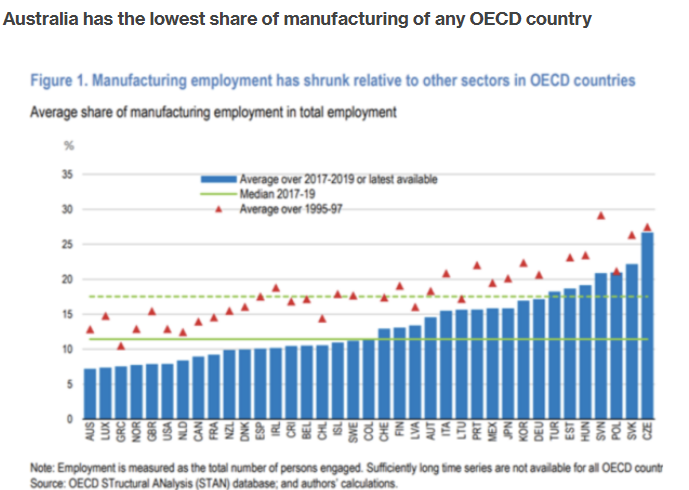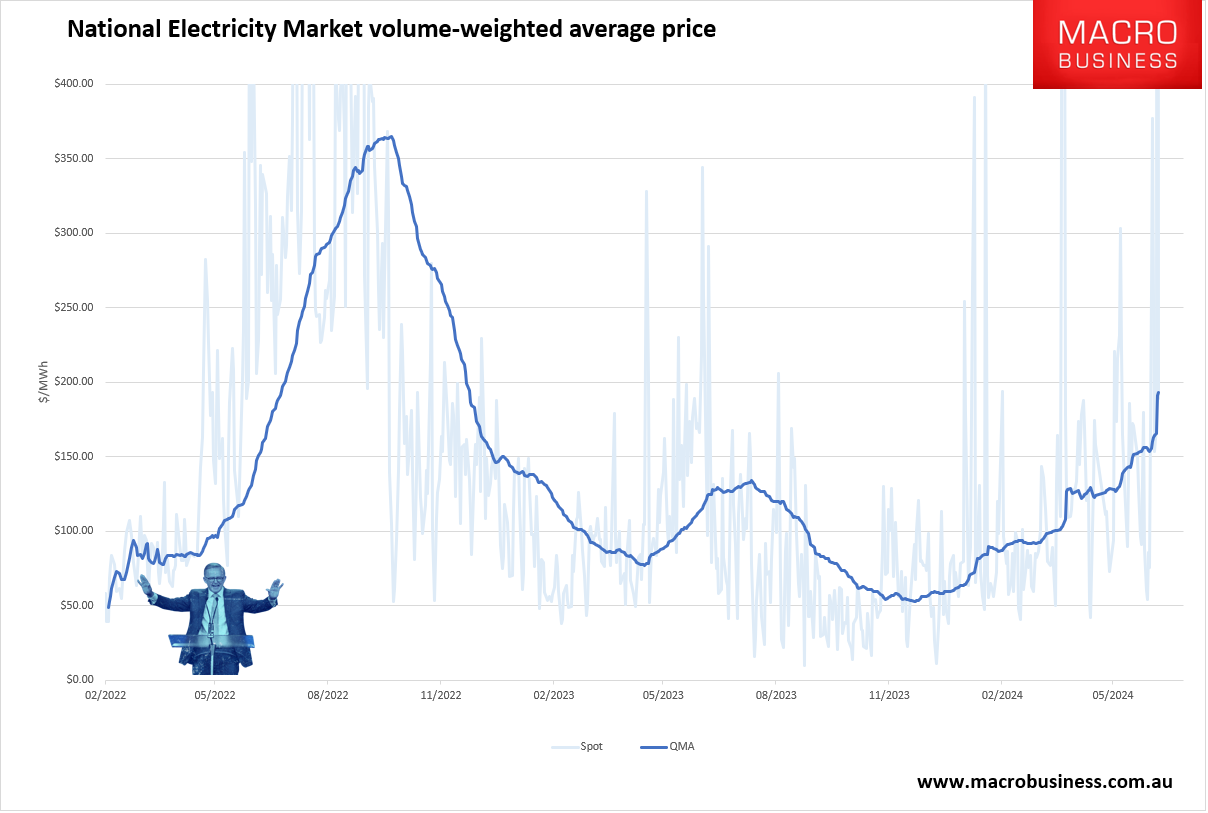Prime Minister Anthony Albanese’ $23 billion Future Made in Australia (FMIA) subsidies for lower-emission manufacturing appear to have found an ally in Professor Roy Green from the University of Technology of Sydney.
Professor Green claims that FMIA is a way to inject more complexity and resilience into the Australian economy:
Professor Green said the main emphasis was on “rebuilding capability”.
“Extending manufacturing competitiveness into areas where each country feels that they have proficiency, skills base, and ultimately a competitive advantage,” he said…
Professor Green said Australia was starting at a low base with its push to increase manufacturing.
“In fact, the lowest base in OECD countries, and we have to get much greater complexity and resilience. That’s the reason for Future Made in Australia,” he said…
Professor Green said Australia should try to emulate Japan, South Korea and Ireland.
He said it was about picking areas of competitive advantage, citing the example of South Korea which developed a strategy in the 1960s and was now among the leading manufacturers…
They started in a small way, with import substitution, making their own cars and so on. Now, they’re in large areas of manufacturing … and they did it themselves,” he said.
As Professor Green noted, Australia has the lowest manufacturing share in the OECD. Therefore, boosting manufacturing is a worthy goal.

The Albanese government has also stated that one of the rationales for FMIA is to support industries where it believes Australia is likely to have a long-term comparative advantage.
Here is a question for Professor Green and the architects of the FMIA policy: How can Australia hope to achieve a comparative advantage in manufacturing when, through policy failure, it has given itself a comparative disadvantage with high-cost energy?
East Coast Australia is a major gas exporter, shipping more than 70% of its gas supplies offshore, primarily to China and Japan.
However, because there is no domestic gas reservation scheme in place on the East Coast, Australians face some of the world’s highest gas costs.
Meanwhile, China and Japan are receiving more Australian gas than they need and are re-exporting to third nations for profit, as explained in the video below:
Australia’s high gas prices have also driven up electricity prices, raising costs for businesses and consumers.

If the Albanese government simply copied Western Australia and every other gas exporter on the planet, set aside a reasonable portion of our East Coast export gas for domestic consumption, and regulated its cost using traditional cost-plus pricing, then Australia would have low cost gas and electricity, as well as a competitive manufacturing sector.
Australia’s manufacturing would then grow on its own, without the need for government subsidies, because low-cost energy would become a comparative advantage, not a disadvantage.
Western Australia has some of the world’s lowest gas and energy prices, despite being a major gas exporter.
The United States is now the world’s largest gas exporter, yet domestic prices remain low (less than US$2.50 per gigajoule) because of its gas reservation policy. The United States has also reduced its carbon emissions by switching from coal to gas.
If the federal government fixes the East Coast gas market through reservation, it will crater energy costs, and our manufacturing industry will become far more competitive.
However, if it continues to kowtow to the foreign governments and the gas cartel and keeps gas and electricity costs high, the only manufacturing that will survive in Australia will be those dependent on taxpayer subsidies.
Furthermore, where will the plastics for Labor’s FMIA solar panels and wind turbines come from now that Qenos, Australia’s last plastics company, has shut down due to rising high prices?
These plastics would be imported from China. So, why not just import the full panel at a lower cost than Australia could possibly build?
The reality is that Australia has no manufacturing future without affordable energy.

